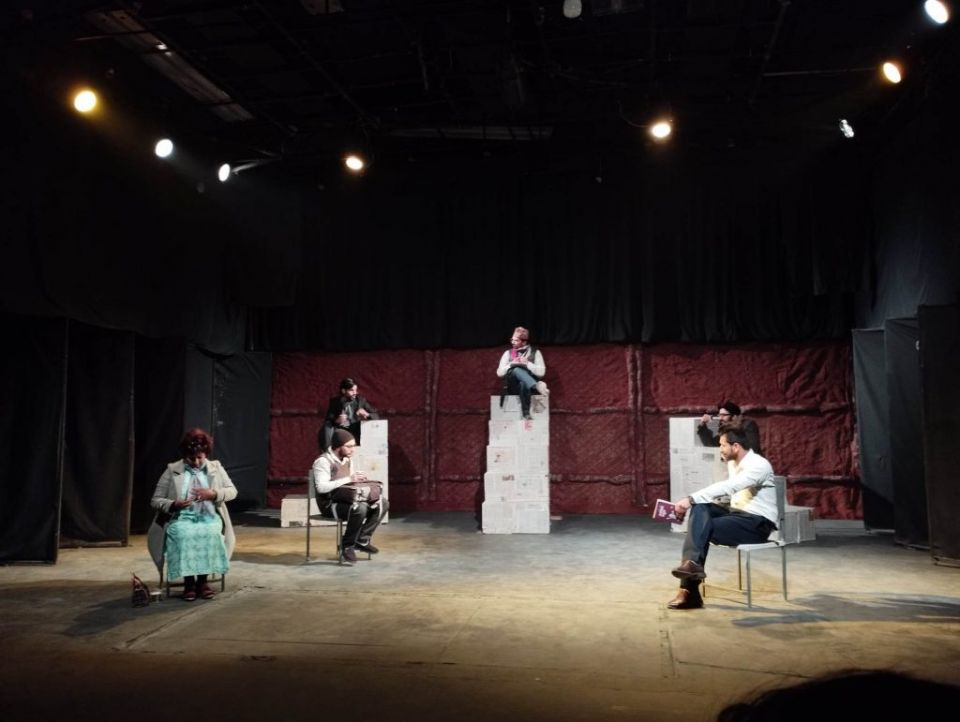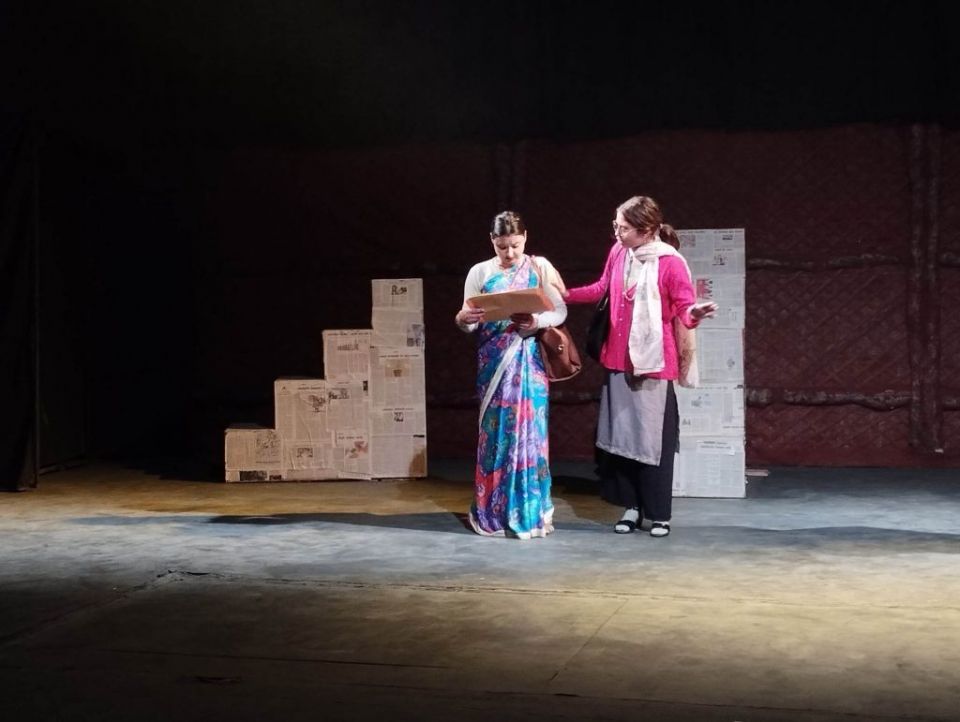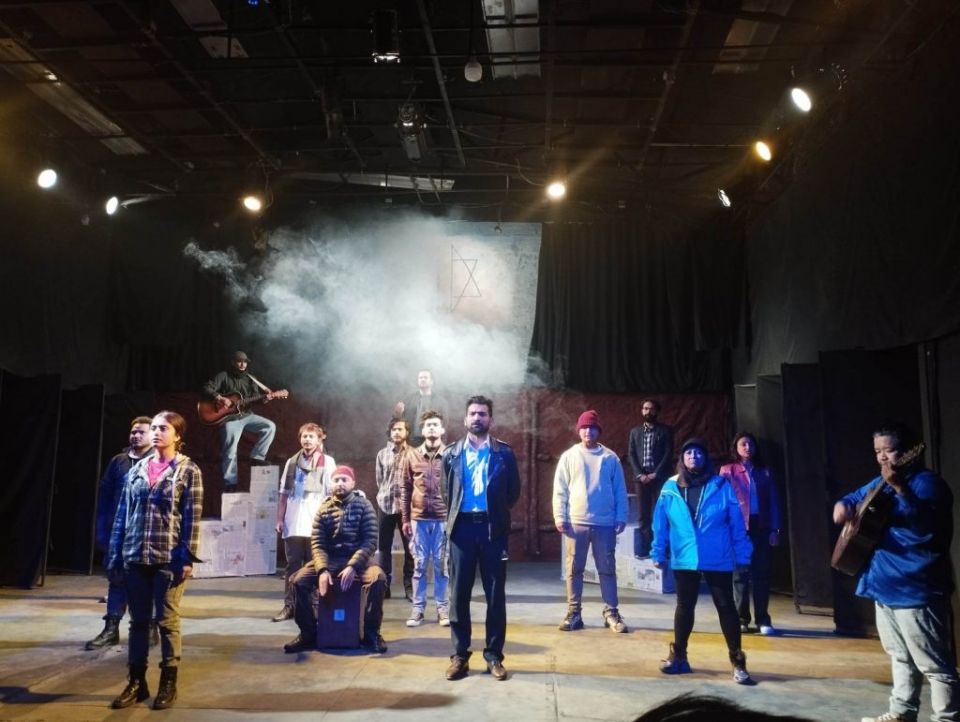
Gyanko Chihan focuses on various educational issues that exist in the Nepali education system.
Are you okay with the way you (or your children) are being taught by your (or their) college or school in Nepal? We bet you are not! We know how the education system works here in Nepal.
Most Nepali parents are not satisfied with the education system of Nepal. They think their children are not doing well in their studies despite spending a lot of money on school fees. Many of them think if they spend more money on school fees, their children’s grades should also be automatically improved. But, does this happen in reality?
Watch the play Gyanko Chihan, which is currently being staged at the Shilpee Theatre in Kathmandu, to know the answer.
The commercialisation of education exposed

Gyanko Chihan realistically depicts the deteriorating state of the Nepali education system.
Gyanko Chihan begins with a scene where a mother is worried about her child’s academic performance. A teacher comes to her and he consults her that the child should take an extra class, which costs extra fees. But, does it make any difference?
Watch the play.
The scenes exemplify how the country’s schools have been commercialising education making the students and parents pay money for something that should be their basic duty. The extra class is just an example that many guardians can relate to the context of the play.
Gyanko Chihan, conceptualised by Pancha Singh and written jointly by Purna Bahadur Gandharb, Naresh Regmi and Ashish Ghimire, has 11 scenes and each of them focuses on various educational issues that exist in the Nepali education system.
It is produced in collaboration with Kalaasi Production and the education department of All Nepal National Independent Students’ Union (Revolutionary).
Realistic approach and live rap
The play’s strength resides in the issues that it has raised. The drama realistically depicts the deteriorating state of the Nepali education system.
This 80-minute play does an admirable job of covering a variety of topics including the politicisation of teachers and other professionals, the corruption and incompetence of universities, the poor status of government schools, and the frustration brought on by student politics and the degrading status of universities.
To support the conversation among the characters and make the play more meaningful, live rap songs are frequently featured in Gyanko Chihan. These rap songs are accompanied by musical instruments such as guitar, cajon, beatbox, ghungro and kalimba, which enhance the performance.
In one of the scenes, five students are talking about the problems in the education sector. They are hopeless about its improvements due to the existing corruption and incompetence in the education sector. As their conversation ends, a rap song is played afterwards.
The snippet of the song goes: Phohor phohori: Rajneetiko phohori / Neta hamra kasta / Jahile khelchhan dohori / Note chhapchan jhyapjhyap / Bikriti chha jhyapjhyap / Sadhai padko dauma / Kitaab hunna gaunma / Shikshak sadhai bidama / Bidyarthi dwubidhama. This translates to dirty politics has corrupted the Nepali education system as politicians do not pay attention to improving them. Teachers are on leave always, leaving the students confused.
Such rap songs have been featured in other scenes as well to add relevancy to the play’s message.
Power-packed performance

Gyanko Chihan is a kind of play that every teacher, student, and everyone related to the education fraternity should watch.
Altogether 19 actors have performed in Gyanko Chihan and each one of them has justified their respective roles as students, teachers, guardians or student leaders.
While the play revolves around a very serious issue, it also has scenes that make the audience laugh out loud. The character Dhoks acted by Arjun Dulal, the student leader acted by Bikas Lama, the dean of the university acted by Shrawan Singh Rana Magar and the government teacher acted by Saubhagiya Singh Rai has done a marvellous job of taking the play to its comical side.
The play has tried to show a lot of things that concern the education system of the country, which obviously could not be shown in a single play. Every teacher, student, and everyone related to the education fraternity should watch and can relate to the characters of Gyanko Chihan.
There are also scenes that can make the student leaders and teachers realise the wrongdoing that they have committed in the academic institution. Those scenes have the power to make them feel guilty.
Though the play shows a myriad of educational situations, it has used basic settings and lighting. The characters themselves are seen arranging chairs to sit on and only a bright yellow light has been used. But, they have all been well-fitted to the play and the message it holds.
The play has a powerful ending. All the characters gather on the stage and carry out a conversation that would make you passionate to work for betterment.
Gyanko Chihan will run through January 14 at 5:00 PM except for Tuesdays at Shilpee Theatre, Battisputali, Kathmandu. There will be an additional show on Saturday at 1:00 pm.












